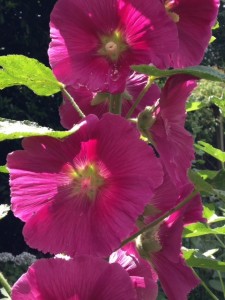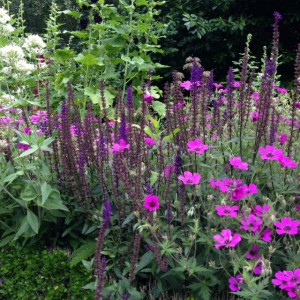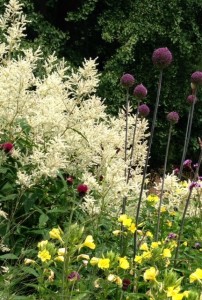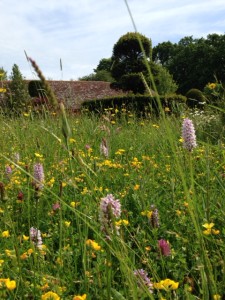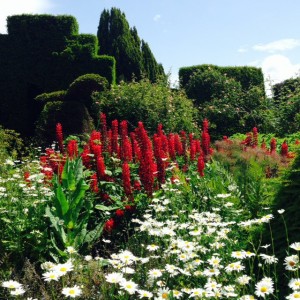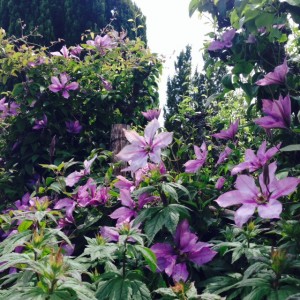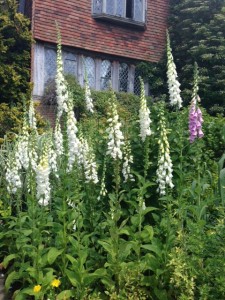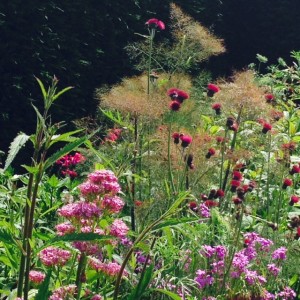I’d been keen to see garden designer Sarah Price’s redesign of Battersea Park’s Old English Garden since reading about the glamorous and beautifully shot opening party in ES magazine two years ago.
When I finally tracked down the down the garden, one hot July morning, hidden behind high brick walls in the heart of the park, I found it as romantic and dreamy as I’d hoped.
Originally built in the 1900s, the garden had become neglected. So it was Sarah’s job, with the help of gardeners from the mental health charity Thrive, for whom it is intended, and the sponsorship of Jo Malone Ltd, to breathe new life into it.
Old roses, honeysuckle and wisteria are in abundance, but there’s an airy, naturalism to the planting that’s fresh and contemporary. Masses of white umbilifers such as the giant Selinum wallichianum and the lower growing Ammi majus, together with great clouds of Centranthus ruber ‘Alba’ give a pretty, lacy feel. Mounds of hot pink Geranium ‘Patricia’ with the dark purply blue spikes of Salvia nemorosa ‘Caradonna’ growing up through it, add colour and contrast.
There’s a wonderful sense of height as you wander amongst the beds with Hollyhocks and Veronicastrum towering above you. I loved the combination of giant frothy heads of Astilbe and delicate yellow evening primrose ‘Oenothera’biennis, complemented perfectly by the purples of the Verbena bonariensis and Alliums.
So if you fancy losing yourself in nature for a little while - seek out this little oasis in the city.

